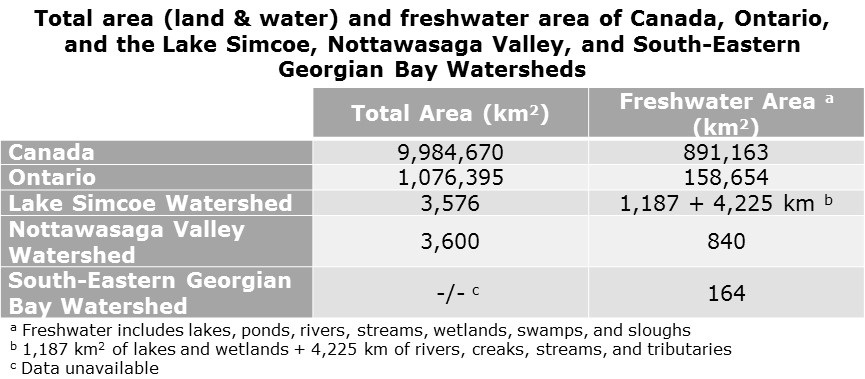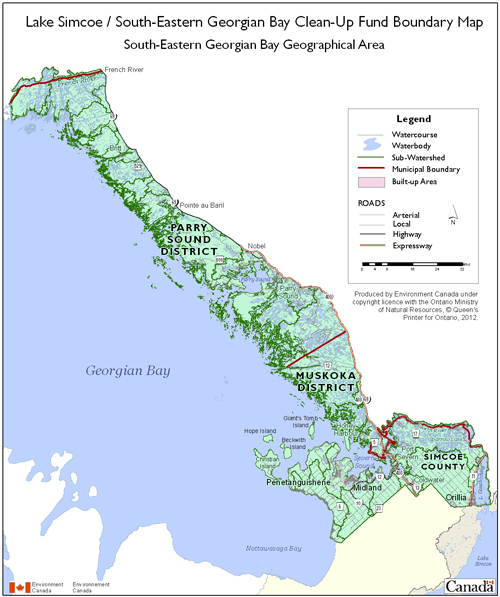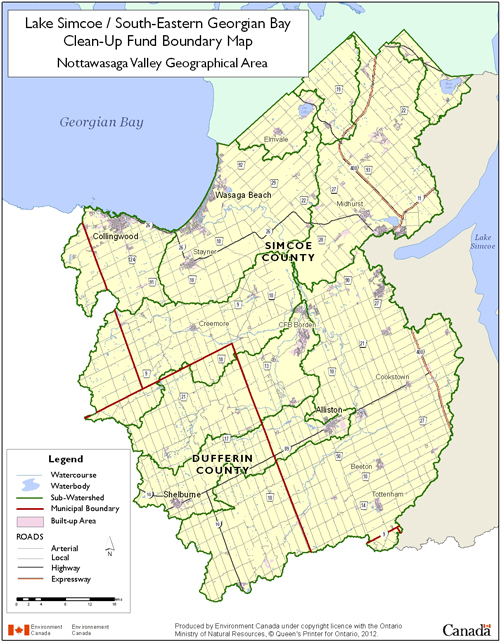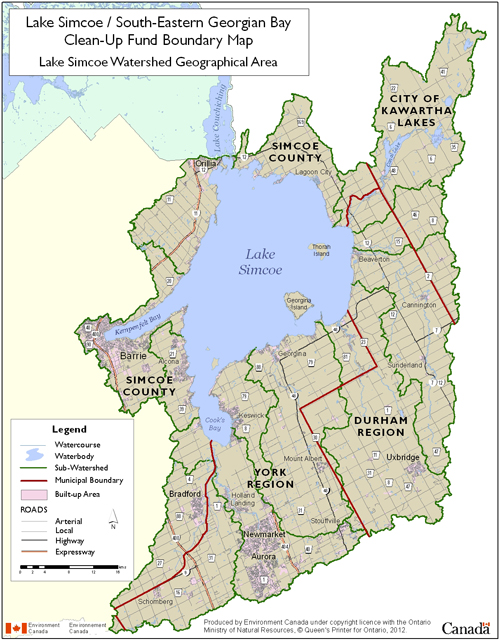The breakdown of land and water surface area is shown below. Canada and Ontario have 8.9 and 14.7% respectively of their total area in freshwater, which is made up of lakes, ponds, rivers, streams, wetlands, swamps, and sloughs (CWF [1]). The Lake Simcoe and Nottawasaga Valley Watersheds have 33 (lake and wetlands only) and 23% respectively of their land area under water (EC).
Canada has a large supply of freshwater but is also one of the highest users of water. Even though overall the country has vast amounts, the distribution is uneven and access is limited in some areas. Challenges moving forward for the country, the province, and these watersheds include an increasing demand as the population grows and combating pollution while protecting the freshwater sources.
Unless otherwise noted, data is sourced from CWF [2]
- Canada West Foundation & Vander Ploeg, C. G. [1] (2011, September). Canada’s Waterscape in Context. In Canadian Water Policy Backgrounders. Retrieved October 6, 2014, from http://cwf.ca/pdf-docs/publications/Water_Backgrounder_2_Sept_2011.pdf
- Canada West Foundation & Vander Ploeg, C. G. [2] (2011, September). Water, Water Use and Water Pricing Around the World. In Canadian Water Policy Backgrounders. Retrieved October 6, 2014, from http://cwf.ca/pdf-docs/publications/Water_Backgrounder_2_Sept_2011.pdf
- Environment Canada. (2014, September 5). Lake Simcoe/South-eastern Georgian Bay Clean-Up Fund (LSGBCUF). In Environment Canada - Water - Lake Simcoe Clean-Up Fund. Retrieved September 15, 2014, from http://www.ec.gc.ca/eau-water/default.asp?lang=En&n=85C54DAE-1




 RSS Feed
RSS Feed
